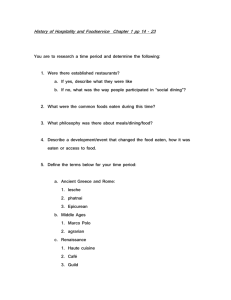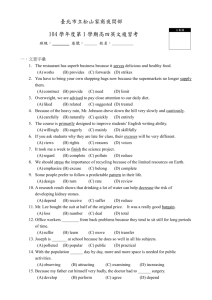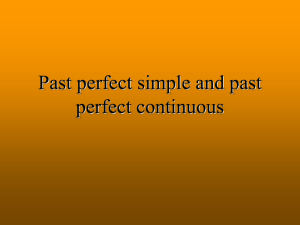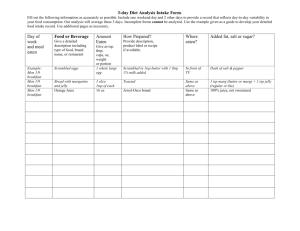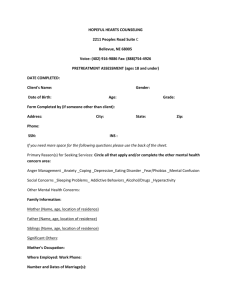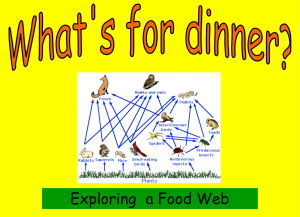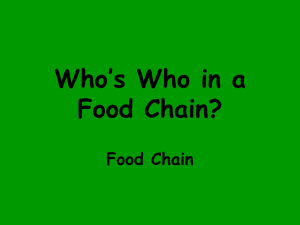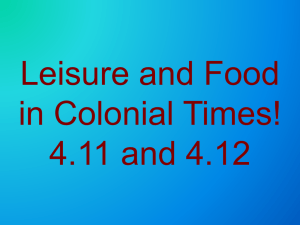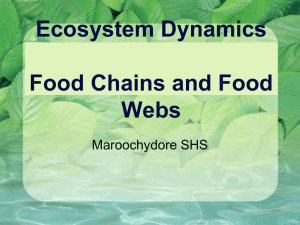Name Date ______ Period ______ Elements/Compounds
advertisement
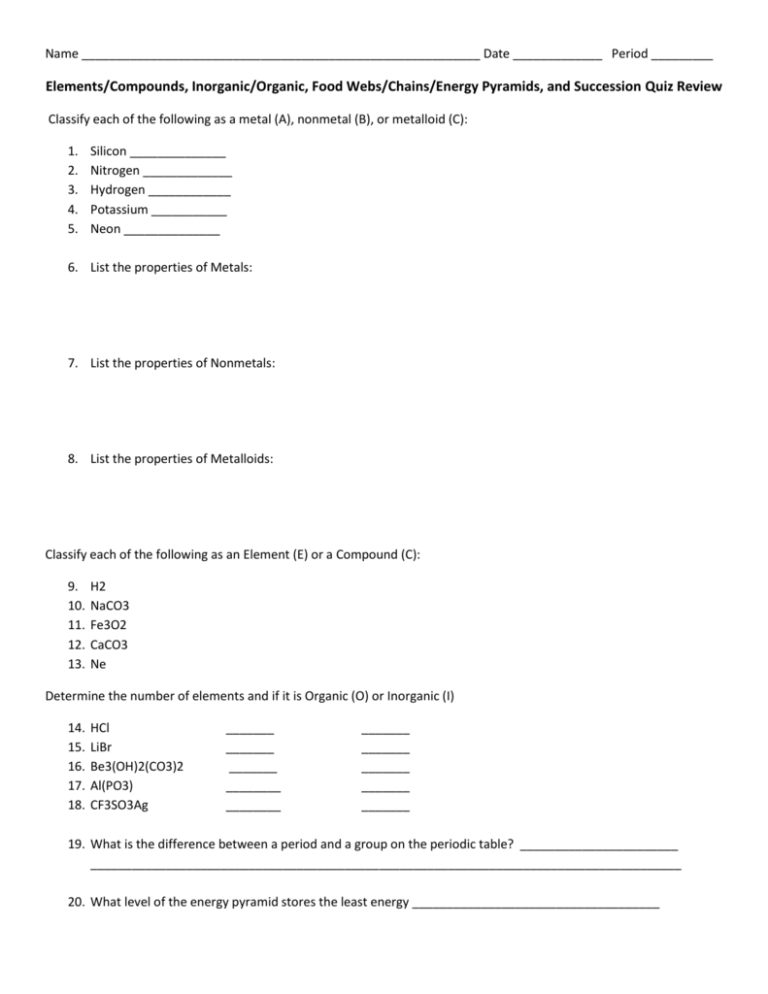
Name __________________________________________________________ Date _____________ Period _________ Elements/Compounds, Inorganic/Organic, Food Webs/Chains/Energy Pyramids, and Succession Quiz Review Classify each of the following as a metal (A), nonmetal (B), or metalloid (C): 1. 2. 3. 4. 5. Silicon ______________ Nitrogen _____________ Hydrogen ____________ Potassium ___________ Neon ______________ 6. List the properties of Metals: 7. List the properties of Nonmetals: 8. List the properties of Metalloids: Classify each of the following as an Element (E) or a Compound (C): 9. 10. 11. 12. 13. H2 NaCO3 Fe3O2 CaCO3 Ne Determine the number of elements and if it is Organic (O) or Inorganic (I) 14. 15. 16. 17. 18. HCl LiBr Be3(OH)2(CO3)2 Al(PO3) CF3SO3Ag _______ _______ _______ ________ ________ _______ _______ _______ _______ _______ 19. What is the difference between a period and a group on the periodic table? _______________________ ______________________________________________________________________________________ 20. What level of the energy pyramid stores the least energy ____________________________________ 21. What level of the energy pyramid stores the most energy? __________________________________ 22. Where does all the energy of an energy pyramid come from? _______________________________ 23. Why does an ecosystem support fewer organisms at higher trophic levels than at lower trophic levels? ___________________________________________________________________________________ ____________________________________________________________________________________ 24. A field of corn is an example of which member of a food chain? __________________________________ 25. What is an example of a decomposer? _______________________________ 26. What type of diagram do we use to show the models of feeding relationships within an ecosystem? ____________________________________________________________ 27. Draw and label (producer/primary consumer/secondary consumer/tertiary consumer/decomposer) a food web for the following descriptions: 28. 29. 30. 31. 32. a. Corn is eaten by a worm b. Corn is eaten by a wild hog c. Worm is eaten by a raven d. Flower is eaten by a worm e. Flower nectar is eaten by a butterfly f. Butterfly is eaten by a raven g. Wild hog is eaten by a pack of coyotes h. Corn is eaten by a mouse i. Mouse is eaten by a coyote j. The leftover hog matter is consumed by a mushroom What is a pioneer species? _____________________________________________________________ ___________________________________________________________Give an example ________________ Any change in plant communities over time is called ______________________________________________ Starting with bare rock, what is the usual ecological succession of organisms? _________________________________________________________________________________________ The stable stage that is established in an area as a result of the process of ecological succession is known as the ________________________________________________________________ Describe secondary succession. _______________________________________________________________ ___________________________________________________________________________________________ ___________________________________________________________________________________________

